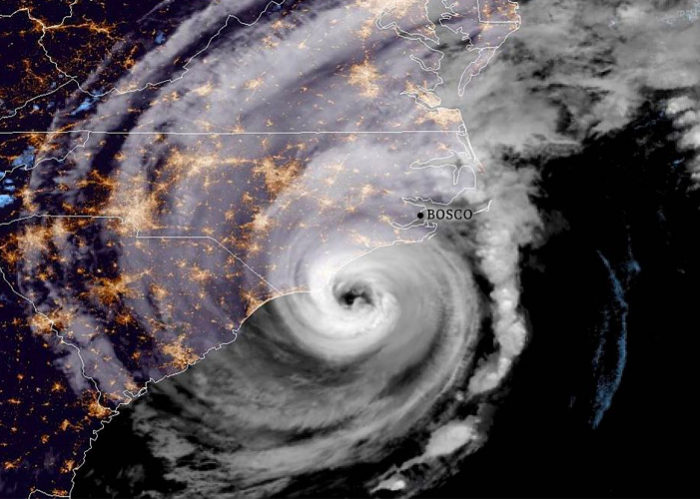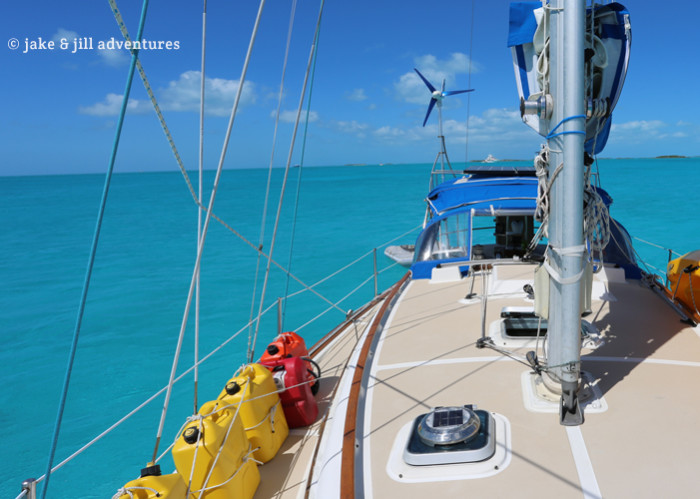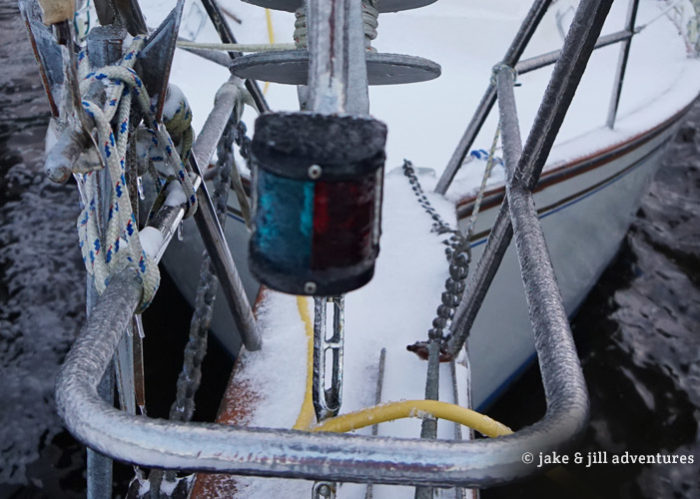Water Catching System
We came to Annapolis because we wanted to be protected from the many storms heading our way. Especially after our first night out in 70mph winds and possible tornados…nothing seemed more appealing than a mooring.
Now that we are officially cruisers, that means we are always on the lookout for provisions, spare parts and tools, and any other means to make our life aboard more comfortable (or necessary).
The number one most important thing for our survival (besides air) is fresh water. Water is a hot commodity and a difficult one to acquire on our little island. That means we need to carry as much water as we can.
As it currently stands, we can hold about 80 gallons which should last us about 2 full weeks. This includes drinking, cooking, cleaning, showering, laundry, etc. Since we left our marina only 5 days ago, we are already down 20 or so gallons, which isn’t a TON in the long-run, but its still a fair amount.
So, I (Jake) loaded up two empty jerry jugs (each capable of holding 5 gallons of water) and buzzed over to the main dinghy dock to top them off. After this very arduous task, I was motivated to find another way to collect water.
With two full days of non-stop rain, Jilly and I put our heads together to formulate a way to catch this water and somehow funnel it into our water tank. We have done some very minimal research on the topic, but it really comes down to your boat’s specific layout and what makes the most sense. We were still about 8-to-10 gallon short of being totally topped off, so we wanted to take advantage of the foul weather and see if we could rig something. Plus, what a great way to pass the time.
The first task was to clean the deck, since it would be running down the deck and into the deck fitting. I waited until it had been raining for awhile before grabbing a deck brush and scrubbing all the salt, dirt and other nastiness that has probably collected.
Then I grabbed a tarp and laid it out, sorting out different ways to tie it down, while keeping it fairly low (and from blowing away). I used some rope and jugs of water to hold it in place, and put a clean towel at the end of the drain to hopefully create a wall to block up the water.
After 2 hours of very heavy rain, we started to see the meter slowly rise. It took about 4 hours to completely top it off, but it worked! It’s pretty amazing how simple catching water can be, and it makes our lives easier knowing we have options. Plus one less thing to worry about!
*Update: Just today, we discovered a little sailboat with a unique water catching system that we plan to mimic. Low profile and very effective…details to come!



















I have a 35 foot Cat and have a rain catching system made from old sail and a drinking hose. The fill is pretty close to the front so the hose is only about 3 feet long but it works pretty well…unless the wind is blowing hard. Then it tends to dump. Still it’s better to have rainwater option; but also make sure the surface that the water will run is clean of mold or debris that can collect over time onboard, because it will end up in your tank and can be difficult to remove.
Wow that sounds great! Actually very similar to the one we saw today. It looked like custom canvas sewn with lines to the forward pulpit and stanchions, and a hose in the center. It looked like it was sewn directly to the canvas. I wonder if some place makes these kinds of contraptions? Also think adding some kind of weight to the center would be good, because it would pull it down to create more of a funnel, especially in higher winds.
Thanks for your comments
-Jill